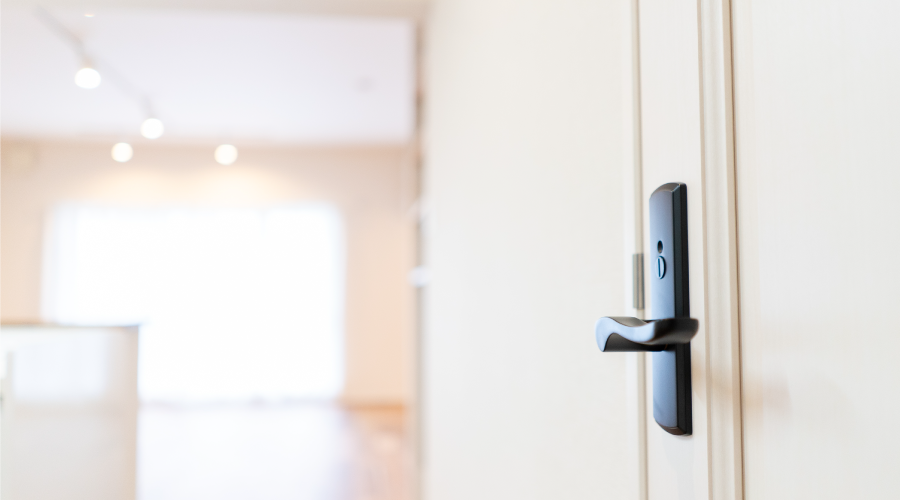Step by Step Process Helps Choose Doors, Hardware
Building doors and door hardware are fairly maintenance-intensive items in most facilities. One reason is the high level of use and abuse that doors and hardware are subjected to day after day. But high use by itself does not always explain why doors and their hardware require so much maintenance. Other factors often play an even greater role.
The problem for many facility managers is that not much attention is paid to doors and their hardware until something goes wrong. This not-so-benign neglect begins early in the planning process and continues all the way through design and construction. In the typical specifications used in new construction and renovation projects, for example, more attention is focused on the finish of the door and the hardware rather than the appropriateness of that selection for the particular application.
Compounding the problem is the changing role that doors and door hardware must perform in facilities today. Traditionally, that role was limited to providing security and access and could be accomplished relatively easily. Today, things are not so simple. Doors and hardware must still provide security and access, but they also must comply with Americans with Disabilities Act requirements and fire codes. Doors with operators must also work in cooperation with the building's fire alarm system. Even relatively minor changes in the requirements in one area can have significant impact in other areas. These additional functions are expected to be performed while providing a visual appearance that meets the architectural requirements of the facility.
In the past, facility managers had to make trade-offs based on the particular needs of an application. Security versus accessibility. Convenience versus life safety. Aesthetics versus operations. No single design could do everything, so facility managers were forced to make some sacrifices in order to get as close as possible to what was needed. Fortunately, there are so many options available today that it is no longer necessary to sacrifice performance in one area to achieve performance gains in another.
When problems occur with door hardware, the typical response is to blame the door itself. Doors that do not close properly, sagging doors, inoperable latches, rot and corrosion are all regular problems. While an ongoing maintenance program can help to minimize these problems, it cannot fully eliminate them if the wrong type of door or door hardware has been installed.
If the door and its hardware are to function properly over their rated service life, both must be matched to the expected normal wear and tear of the application. Selection of components that do not match the needs of the particular application will create ongoing maintenance and security issues. Proper selection requires a thorough understanding of the way both occupants and visitors will need to enter and move through the facility. It also requires an understanding of how issues such as security and accessibility impact product decisions.
Related Topics:














